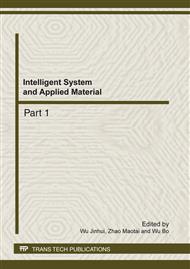p.876
p.881
p.886
p.891
p.896
p.901
p.907
p.912
p.916
Study and Application of a Slide Mode Control on Pneumatic Force Servo System
Abstract:
In this paper, a sliding mode control approach combined with the boundary saturation function approach is put forward and used in a pneumatic force servo system to achieve an exact force control. First, a comparatively accurate model of the system is obtained by using the system identification approach and an analysis is made on the time-varying nature of the model. Then, it is designed by use of the boundary saturation approach, thus overcoming the system instability caused by the non-linearity of the proportional pressure valve and the change of the temperature inside the air cylinder. Finally, the performance of the pneumatic force servo control system is simulated and a comparison is made with the PID control. Results show the feasibility and effectiveness of the approach.
Info:
Periodical:
Pages:
896-900
Citation:
Online since:
February 2012
Authors:
Price:
Сopyright:
© 2012 Trans Tech Publications Ltd. All Rights Reserved
Share:
Citation:


